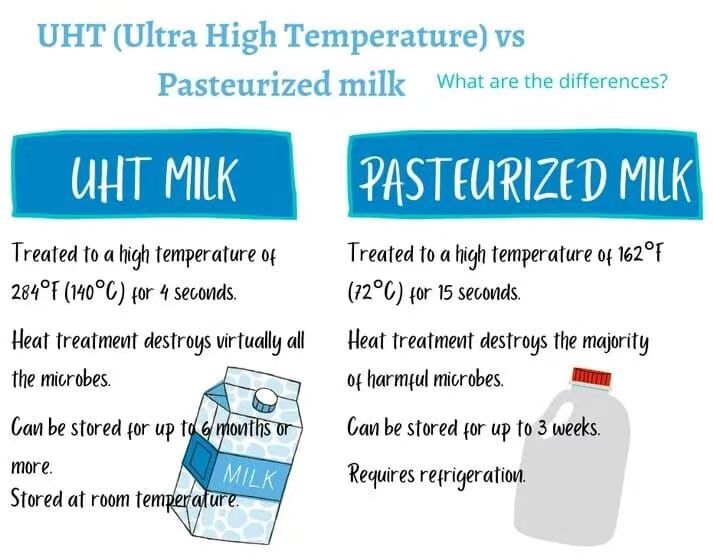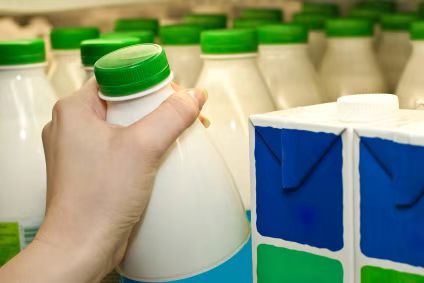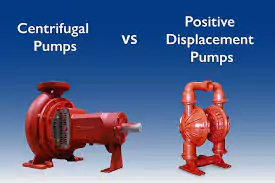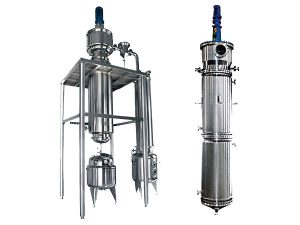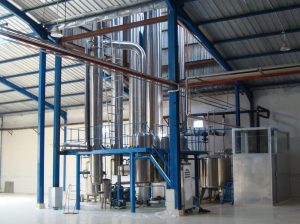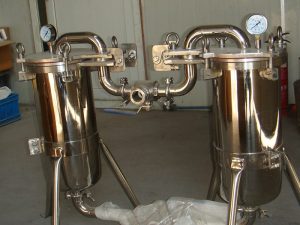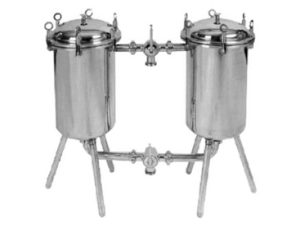In the equipment manufacturing industry, process efficiency and product quality often depend on choosing the right evaporation technology. Whether you are working in chemicals, pharmaceuticals, food processing, or dairy, selecting the correct evaporator can significantly impact your production costs, energy consumption, and product consistency.
Two of the most common technologies are the Rising Film Evaporator—also known as the Climbing Film Evaporator—and the Falling Film Evaporator. Both serve the same function: concentrating liquids by removing solvents or water. However, the way they operate and the results they deliver differ greatly.
This in-depth article explores 8 major differences between Rising Film and Falling Film Evaporators. By the end, you’ll have the clarity needed to make an informed decision when investing in new equipment.
Table of Contents
ToggleWhat is a Rising Film Evaporator?
A Rising Film Evaporator—sometimes called a Climbing Film Evaporator—uses natural circulation and vapor lift to move liquid upward inside vertical tubes. As the liquid heats, vapor bubbles form at the bottom. These bubbles push the liquid film upward, ensuring efficient heat transfer as the liquid climbs along the tube walls.
Advantages of Rising Film Evaporators:
-
Compact design suitable for smaller facilities.
-
Well-suited for low-viscosity fluids.
-
Effective when operating with high temperature gradients.
Common applications: sugar concentration, salt solutions, and basic chemical mixtures.
What is a Falling Film Evaporator?
A Falling Film Evaporator works differently: liquid enters at the top of the vertical tubes and flows downward by gravity as a thin film. Steam or heating media outside the tubes evaporates the solvent efficiently as the film descends.
Advantages of Falling Film Evaporators:
-
High energy efficiency with lower temperature differences.
-
Gentle on heat-sensitive products such as dairy, fruit juice, and pharmaceuticals.
-
Excellent for large-scale, continuous operations.
-
Easy to clean and maintain, reducing downtime.
Common applications: milk concentration, juice production, protein extracts, pharmaceutical ingredients, and specialty chemicals.
Rising Film Evaporator vs Falling Film Evaporator: 8 Differences
| Factor | Rising Film (Climbing Film) Evaporator | Falling Film Evaporator |
|---|---|---|
| Flow Direction | Liquid rises due to vapor lift inside tubes | Liquid flows downward by gravity |
| Circulation | Natural circulation, dependent on vapor bubbles | Gravity-driven or forced with distributors |
| Heat Sensitivity | Less suitable for delicate products | Excellent for heat-sensitive products |
| Energy Efficiency | Requires higher temperature gradients | Efficient even with low temperature differences |
| Operating Range | Best for small-to-medium production | Ideal for large-scale industrial operations |
| Maintenance | Scaling and fouling may occur | Easier cleaning, reduced fouling |
| Product Quality | Risk of thermal degradation | Preserves product integrity and flavor |
| Applications | Sugar, salts, basic chemicals | Dairy, juices, pharmaceuticals, fine chemicals |
Why Purchasing Agents Should Care About These Differences
1. Product Quality Retention
If your process involves sensitive materials such as milk proteins, natural extracts, or pharmaceutical ingredients, the Falling Film Evaporator is the superior choice. Its low-temperature operation minimizes thermal damage, preserving both taste and active properties.
2. Energy Consumption
With rising global energy costs, selecting the more efficient system directly impacts profitability. Falling Film Evaporators consume less steam and reduce operational costs over time.
3. Maintenance and Downtime
Scaling inside tubes is more frequent in Rising Film Evaporators due to bubble formation. Falling Film systems, with smoother flow, offer easier maintenance and longer operational uptime.
4. Long-Term Investment
Though a Falling Film Evaporator may have a higher initial investment, its energy savings, product quality preservation, and scalability often result in a faster return on investment.
FAQ
1. Which evaporator offers the best energy efficiency?
The Falling Film Evaporator is more energy-efficient due to its ability to operate with lower temperature gradients.
2. Can a Rising Film Evaporator process viscous or heat-sensitive liquids?
Not ideal. Rising Film units are better suited for non-sensitive, lower-viscosity liquids.
3. What industries most benefit from Falling Film technology?
Food processing, dairy, juice concentration, pharmaceuticals, and high-value chemical production.
4. How does cleaning compare between the two?
Falling Film Evaporators are easier to clean because liquid flows smoothly downward, minimizing deposits and fouling.
5. What is the typical lifespan of an evaporator system?
With proper maintenance, both types can last over a decade, but Falling Film units often show better long-term performance due to reduced fouling and lower operational stress.
Conclusion
Both Rising Film Evaporators and Falling Film Evaporators are proven technologies in industrial evaporation. However, the right choice depends on production scale, energy requirements, and the nature of the processed material.
-
Choose a Rising Film Evaporator if your process involves simple, non-sensitive liquids and smaller-scale operations.
-
Choose a Falling Film Evaporator if you require high efficiency, gentle processing, and scalable solutions for sensitive or large-volume production.
Our engineering team specializes in manufacturing, and customizing advanced evaporation systems. If your company is exploring new solutions or planning an upgrade, contact us today for tailored specifications, technical guidance, and competitive quotations.

